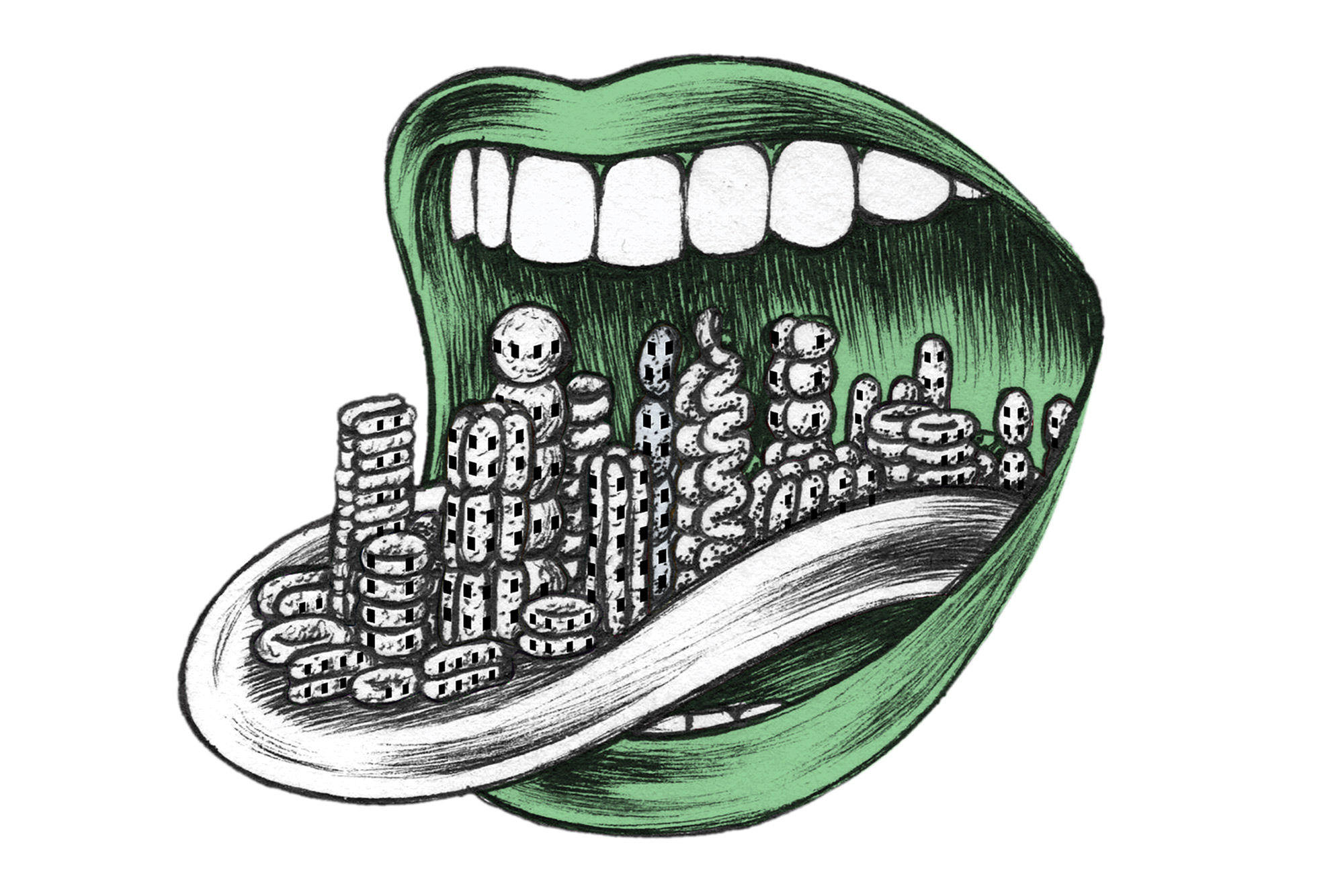

Jessica Mark Welch is an Associate Scientist at the Marine Biological Laboratory in Woods Hole. This is her story from the field as told to Claire Maldarelli.
Bacteria run the world, and even though they’re all around us and seemingly crucial to the function of every single biological ecosystem, we still know little about them. Understanding how a big and diverse population of microorganisms relates to itself and its environment—particularly how each one is distributed within the space it occupies—will help us better grasp the dynamics behind complex microbial networks affecting the well-being of all living creatures.
The human mouth is one of the most densely packed bacterial hot-spots anyone’s ever studied, so my colleagues and I scraped the tongues of 21 volunteers and placed the gunk onto microscope slides. Using data from the Human Microbiome Project, we identified the 17 most abundant kinds of bacteria and attached a dye that gave each one a different color when we shined a laser on them.
The resulting image resembled a city skyline, with microbial stacks jutting outward from each tongue cell. Actinomyces and Rothia—which play a key role in turning food’s nitrate into nitric oxide that helps regulate blood pressure—showed up in just about every sample. The former stayed close to a cell’s center while the latter resided near the edge. Now we want to figure out why they are distributed this way.
This story appears in the Fall 2020, Mysteries issue of Popular Science.